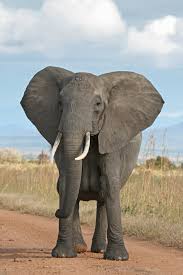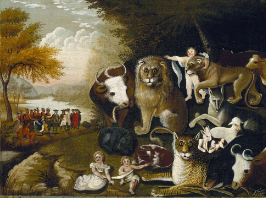Elephants, the gentle giants of the savannah and the forests, have captivated human imagination for centuries. Their imposing size, remarkable intelligence, and complex social structures make them one of the most fascinating creatures on our planet. From ancient folklore to modern conservation efforts, elephants hold a special place in both our hearts and our ecosystems.
According to worldwildlife.org, elephants stand tall with their distinctive elongated trunks and large, flapping ears. They are instantly recognizable. They are the largest land animals on Earth, with African elephants towering up to 13 feet and weighing as much as 14,000 pounds, while their Asian cousins are slightly smaller but still formidable in size. Despite their massive bulk, elephants move with surprising grace and agility, effortlessly navigating their habitats.
ElephantVoices.org explains how elephants are highly social beings, living in tight-knit family groups known as herds. Led by the oldest and most experienced female, the matriarch, these herds consist of her offspring and other related females and their young. Male elephants usually leave the herd when they reach adolescence and may form bachelor groups or live solitary lives, occasionally rejoining herds for mating.
Communication among elephants is complex and varied, involving a combination of vocalizations, body language, and even seismic signals through the ground. Their deep rumbles travel long distances, allowing them to stay connected even when separated. Elephants also display remarkable cognitive abilities, including problem-solving skills, memory retention, and emotional intelligence. They exhibit empathy and altruism, often displaying behaviors that demonstrate care and concern for members of their herd.
Elephants play a crucial role in maintaining the health and diversity of their ecosystems. As large herbivores, they shape their environments by browsing vegetation, clearing paths through dense forests, and creating water holes that benefit other species. Their dung also serves as a vital source of nutrients for many plants and insects. By acting as ecosystem engineers, elephants contribute to the overall balance and resilience of their habitats.
Despite their significance, elephants face numerous threats to their survival, primarily driven by human activities. Habitat loss due to deforestation, agriculture, and urban expansion has led to fragmented populations and dwindling resources. Illegal poaching for ivory remains a significant threat, despite international bans and conservation efforts. Human-elephant conflict is also on the rise as human populations expand into elephant territories, leading to casualties on both sides.
Efforts to protect and conserve elephants have gained momentum in recent years, with organizations and governments working together to address their various challenges. Conservation initiatives focus on habitat preservation, anti-poaching measures, community engagement, and education. Protected areas and wildlife corridors are established to ensure safe passage for elephant populations, while initiatives to reduce human-elephant conflict involve employing methods such as fencing, early warning systems, and crop compensation schemes.
Elephants symbolize the beauty and complexity of the natural world, reminding us of the importance of coexistence and conservation. As stewards of our planet, it is our responsibility to ensure the survival of these majestic creatures for generations to come. By supporting efforts to protect their habitats, combat poaching, and mitigate human-elephant conflict, we can secure a future where elephants continue to roam the wild, enriching our world with their presence.





























































































































